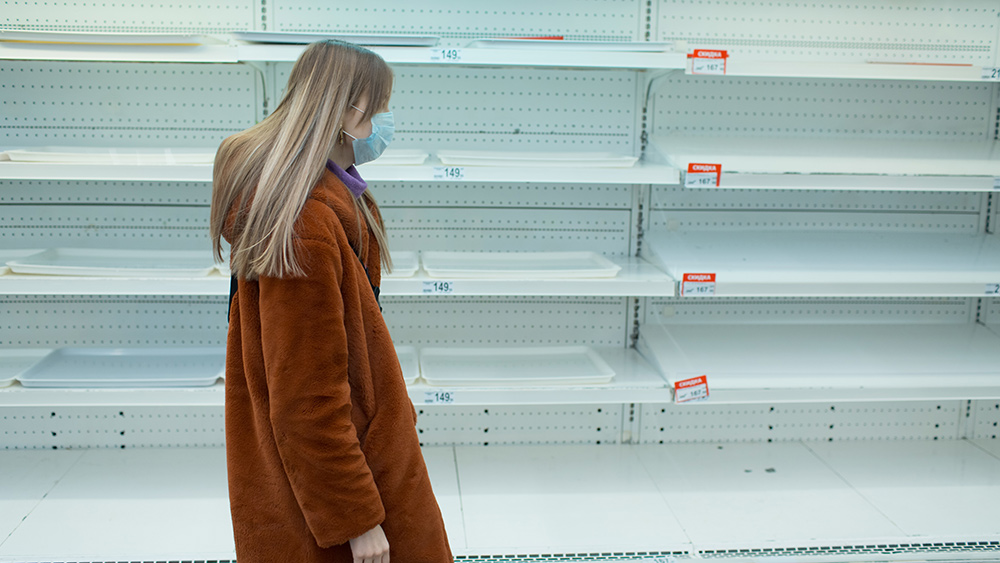Inflation, soaring oil prices hobble farmers worldwide
03/17/2022 / By Mary Villareal

Inflation and increased energy costs have been exacerbated by the Russia-Ukraine conflict, with inflation hitting a record high of 7.9 percent the past week. Even red diesel, which is commonly used for farm operations, is now reaching all-time highs.
The continuous optimism just a few weeks ago about the U.S. long-grain rice crop being able to hold planted acres steady in the past year. However, as input costs rise faster, that hope is quickly dwindling. It will not be a stretch to say that the U.S. long-grain crop would drop by another 15 percent this year.
The increased prices for diesel fuel and fertilizers, in particular, are weighing heavily on farmers.
“It’s the combination of transportation cost and then the fuel we’ll need to be able to apply fertilizer, or any kind of herbicides, and then obviously prepare the fields and plant. All of those will have to go into the equation for how much it’s going to cost to put a crop in the field,” says Tippecanoe County farmer and Indiana Farm Bureau Board of Directors, Kevin Underwood.
Robert “Bob” White, the director of the National Government Relations with Indiana Farm Bureau said he’s seen fertilizer prices increase anywhere from 300 to 500 percent.
“The fertilizer price has gone up incrementally since probably about mid-last summer when we saw some supply chain problems and demand in other parts of the world [picked] up,” he said.
In 2020, there were 2.96 million acres of long-grain rice, but this dropped 17 percent to 2.53 million acres in 2021, and another 15 percent decrease is expected this year, leaving only 2.15 million in rice crops.
Crop planting and yields affected worldwide
In South America, Brazil is particularly impacted by the Russia-Ukraine conflict. Brazil imports over 80 percent of its total fertilizer needs and almost 100 percent of its nitrogen fertilizer from Russia.
To circumvent their concerns and ensure fertilizer supplies for upcoming crop cycles, the Brazilian government has announced an emergency National Fertilizer Plan in which they intend to produce 40 percent of their own fertilizers by the year 2050. Today, however, Brazil only produces about four percent of its own nitrogen-based fertilizers. (Related: Russia-Ukraine war will further worsen global food shortage as poor nations face starvation, unrest.)
Fertilizer concerns are also compounded by the drought, creating expectations that the harvest of Brazil’s soybeans, corn, sugar and rice crops will be lighter in both acreage and yields.
That is the reason why U.S. farmers cycle out of rice and into soybeans. China’s demand for such does not fade with the acres reduced by drought or yield reduced by unavailable fertilizer.
In Asia, the fluctuation of the baht has Thai prices bumping to over $410 per metric ton (pmt). In the last three months, Thai prices have already increased by seven percent. Viet prices, on the other hand, are holding steady at just over $400 pmt, and have fluctuated less than five percent in the last three months.
India and Pakistan are at lower price points, around $360 pmt for the last three months and into the current cycle.
Weekly U.S. Department of Agriculture export sales reports also showed that net sales for the week at 36,700 million tons (MT) were down 48 percent from the previous week, and 61 percent from the prior four-week average. (Related: Food insecurity worsening already following Russian invasion of Ukraine, as countries begin withholding exports and hoarding commodities.)
Increases were primarily for Mexico (14,700 MT), Japan (13,300 MT), Nicaragua (5,400 MT), Canada (2,500 MT) and Guatemala (1,500 MT), which were offset by the reductions for Costa Rica (1,500 MT).
Exports of 21,600 MT were also down 73 percent from the previous week and 74 percent from the prior four-week average, with primary destinations including Haiti (15,300 MT), Canada (3,200 MT), Mexico (2,000 MT), Taiwan (300 MT) and Hong Kong (200 MT).
Follow Inflation.news for more stories about rising food and oil prices.
Watch the video below to know how inflation and oil prices are affecting people worldwide.
This video is from the Dustin Nemos channel on Brighteon.com.
More related stories:
The world is headed for a rocky commodities and energy market in 2022: Here are 3 reasons why.
Price of wheat soars to record high as war between Russia and Ukraine continues.
Sources include:
Submit a correction >>
Tagged Under:
agriculture, chaos, exports, famine, fertilizer, fertilizer production, food collapse, food supply, fuel supply, harvest, inflation, market crash, panic, power, power grid, products, Russia, shortages, starvation, supply chain crisis, Ukraine, World War III
This article may contain statements that reflect the opinion of the author
RECENT NEWS & ARTICLES
FoodRiots.news is a fact-based public education website published by FoodRiots.news Features, LLC.
All content copyright © 2021 by FoodRiots.news Features, LLC.
Contact Us with Tips or Corrections
All trademarks, registered trademarks and servicemarks mentioned on this site are the property of their respective owners.




















